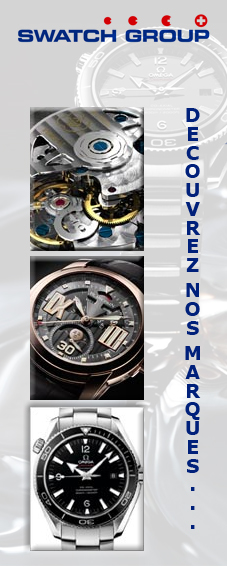|
|
Michel Boulanger - SIHH Interview
Michel’s expectations and the public’s reaction
This was not my first SIHH – I have had the privilege of attending before, but it was my first time presenting at the SIHH. You always hope that people will be interested in your project, but until the launch you never really know – and I have to I admit to a small anxiety beforehand. But the fair was excellent and I was really impressed with the response of those who were present at the SIHH. All week there were people who came to see us, either on the spur of the moment or by booking an appointment in advance, and everyone seemed universally interested with the adventure and gave their support towards it. I left Geneva at the end of the week reassured that we had chosen the right path, that our cause was a thoroughly worthwhile one.
The project’s universal appeal
It appears from those we met at the SIHH that the Naissance d’une Montre adventure has a universal appeal that crosses different cultures, nationalities and even professions. A decline in skills, knowledge and values can occur in any sector in any country, whether it is in masonry or carpentry skills or even users of a language that is dying out. And so, yes, those in the watch industry were impressed that we were trying to slow down, or hopefully stop and reverse, the decline in knowledge of manual watchmaking techniques and tools, but perhaps surprisingly, also those with little horological know-how appeared to fully appreciate the aims of our project.
Presenting at the SIHH helped to foster new relationships…
One very pleasant aspect of presenting the adventure at the SIHH was that we became aware that there were many other people on the same wavelength– not just those that supported our project with ‘that’s great, keep it up’, but also those that offered to do something practical in preserving and safeguarding traditional watchmaking techniques for the future generations.
…with watchmaking museums
For example, the people from the watchmaking museums of La-Chaux-de-Fonds and Le Locle who were at the SIHH were delighted to hear about our project and offered to loan us some of the traditional tools they have amassed over the years – which could complement the already copious tools that Philippe Dufour possesses, and which we’re already using.
…with watchmaking schools
The director of the Geneva watchmaking school seemed interested in exploring some form of partnership.
…withwatchmaking enthusiasts
Few experienced watchmakers were familiar with the tools and techniques that we showcased, and it meant that we could exchange ideas on how to use them. One older gentleman said he sometimes configured the mandrel (burin-fixe) vertically; we had just been using it horizontally. It was definitely something to consider and both vertically and horizontally have their uses.
So the SIHH was excellent for ‘networking’ with others who have the same concerns as us.
In general, it was just great to see how what we were doing aroused people’s imagination.
Presenting techniques and tools that were new to people
Many watchmakers who visited had never seen an uprighting tool (perce-droit); all they knew were electronically-controlled machines, CNC machines. So, in a sense, we were opening people’s minds to ‘new’ techniques, even though what we were presenting were actually old techniques!
The likes of the planting tool (outil à pointer), uprighting tool (perce-droit) and mandrel (burin-fixe) showed people alternative ways of creating high-precision components that were different to what they were used to. Some watchmakers haven’t got the financial means to buy a CNC machine or afford their maintenance – the uprighting tool does the same thing at a very reasonable price and you can do so much with it, it’s so versatile. What we had at the SIHH – the three tools and the bench –were pretty much the key essential tools used to create a watch movement from scratch.
Some members of the public tried for themselves, even those that have received watchmaking training– and they saw that it requires a lot of skill and practice! It shows that we all have an apprenticeship to do, that we never stop learning.
Working with Philippe Dufour
It has been great to work with Philippe, since the beginning of the project and during the SIHH. I try to assimilate and acquire his techniques and he quickly corrects me if/when I make a mistake and that enables me to not hesitate in pushing myself that bit further.
SIHH conclusions
It was a thoroughly enjoyable experience and I felt that we really brought something different to the SIHH. There were big brands with large stands and many staff . . . and there was Philippe and I, in our little retro atelier. But it felt as though we were really providing some added value – we weren’t there to sell a watch, we were there to show the real roots of horology and how watches used to be made – and how they can still be made. So I felt we really added to the proceedings and offered an extra dimension for those that attended.
Original language: English
|
